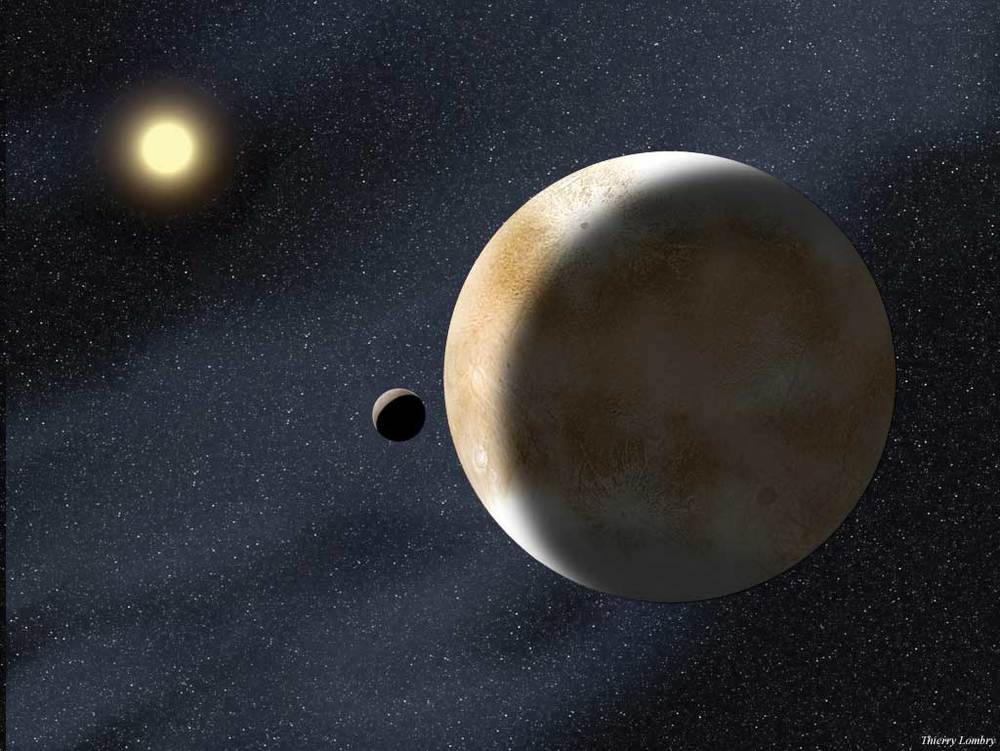Dwarf planet Eris is Pluto’s twin
Further details on recently-discovered planet leads to familiar results

Ever since Pluto’s demotion from planetary status, astronomers have been on the lookout for other similarly-sized and located dwarf planets. The region beginning from the orbit of Neptune and extending away from us is known as the Kuiper belt, inhabited by rocks, dust, debris and large numbers of small planetesimals and dwarf planets. Since its discovery in 1992, the known population of the Kuiper belt has increased to over 1000 objects, one of these being the small dwarf planet Eris.
Discovered in 2005, it is thought to have similar characteristics to Pluto and played a role in its re-classification as a smaller ‘dwarf planet’. Astronomers have been keen to observe Eris and its small satellite Dysnomia in greater detail, but have thus far struggled due to its great distance from us — at 95.7 AU, it is approximately 3 times further from the Sun than Pluto (1 AU being the Earth-Sun distance).
New research performed by scientists at Pierre et Marie Curie University and Observatory of Paris made use of a rare astronomical event – a stellar occultation – to gather detailed data about the size, atmospheric composition and orbit of Eris. A stellar occultation is when a planetary body passes in front of a background star, observable due to the resulting dip in stellar intensity. For Eris, this happened on 6 November 2010, and analysis of the gathered observations has led to unexpected results.
Previous methods making use of surface reflectivity and attempted direct imaging had provided conflicting results about Eris’s size. Dysnomia’s movements revealed Eris’s mass to be around 27% greater than that of Pluto while their radii are approximately the same, making the two planetary twins – at least in size.
Considering its great distance, scientists had expected Eris to be much larger than Pluto as the two are approximately as bright in the sky. As this was shown not to be the case, the value for Eris’s albedo became more important in consolidating the results. Albedo, a measure of the reflectivity of the planetary surface, can range from 0 to 1, where 1 represents a white surface that reflects all the light that falls upon it and 0 a black, non-reflective body. The observable brightness of Eris led scientists to expect a high visible albedo, confirmed through this study to be approximately 0.96.
“This unusually bright surface is difficult to reconcile with the idea that objects in the outer Solar System become darkened by cosmic rays and micrometeorite impacts over time,” says Amanda Gulbis, a visiting scientist in Earth, Atmospheric, and Planetary Sciences at the Massachusetts Institute of Technology (MIT). “The new observations could thus support a long-standing theory that, as a large, icy, Kuiper-belt object approaches the Sun during its orbit, a putative atmosphere could sublimate and then condense out as the object moves farther away.”
This supposed atmosphere was a main target of the study; stellar occultations provide ideal conditions under which to measure planetary atmospheres, as the stellar light travels through the cloud of gases surrounding the transiting body. The atmosphere of Eris was shown to be barely-there – it is thought that Eris’s “bright surface [is] possibly caused by a collapsed atmosphere, owing to its cold environment”, as barely-there amounts of nitrogen, argon and methane and a low surface pressure suggest an extremely tenuous Pluto-like atmosphere.
Planetary exploration studies such as this one are essential to discover more about the most unreachable areas of our solar system, and to learn more about planetary formation, evolution and composition. The full research is published in Nature. DOI: 10.1038/nature10550








